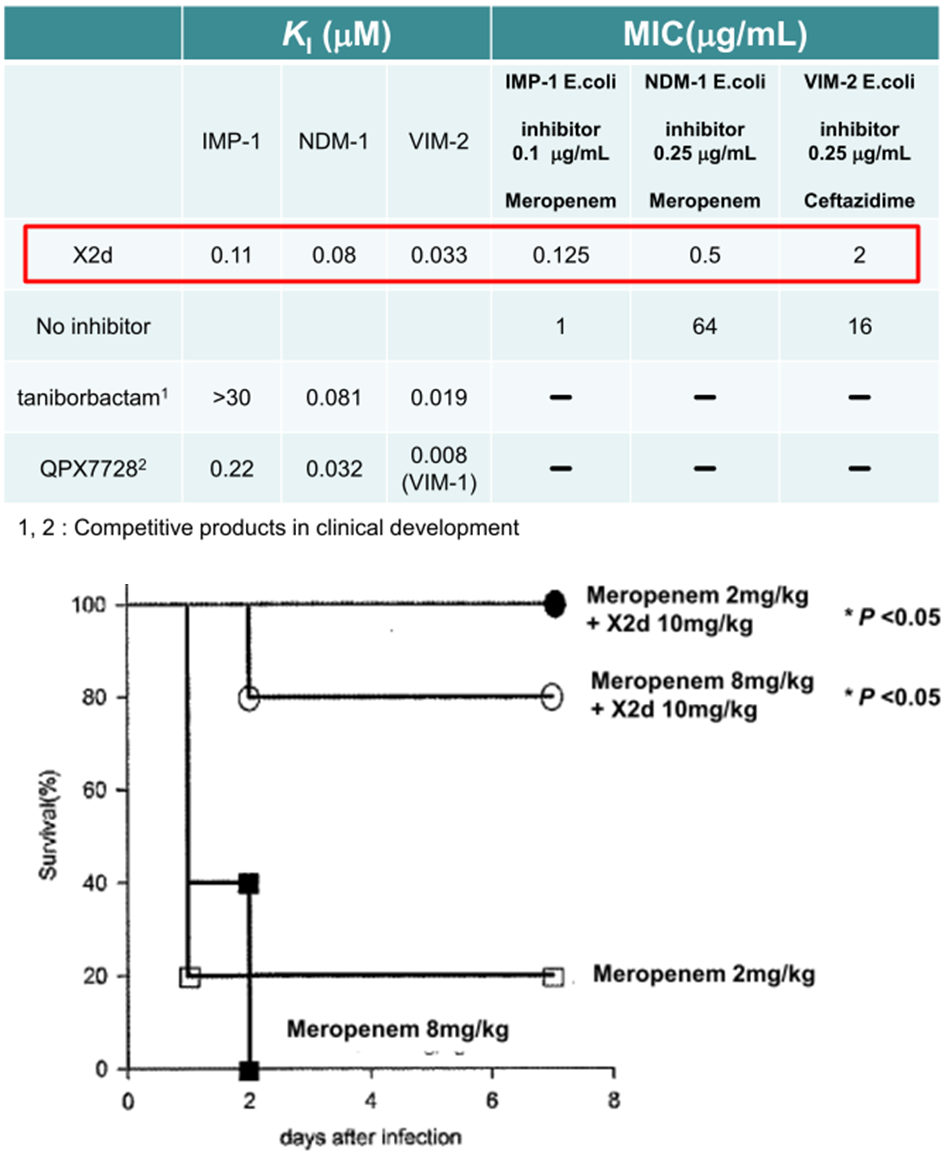Advantages
- Inhibition against major metallo-beta-lactamases including NDM-1, IMP-1 and VIM-2
- New compounds found by screening and structurally optimized by β-lactamase binding analysis
- Low cytotoxicity and acute toxicity in mice, and efficacious in mouse infection experiments
Background and Technology
In recent years, reports of infectious disease-causing various microbes acquiring resistance to β-lactams have been increasing, and the difficulty in treating infections with these organisms has become a serious issue. The major resistance mechanism in many microbes is the production of β-lactamases that degrade and inactivate β-lactams. Metallo-β-lactamases (MBLs) are metalloenzymes that contain zinc at their active center, and inactivation mechanism by MBLs is totally different from that of serine β-lactamases having a serine residue at their active center.
MBLs exhibit broad substrate specificity, and MBL-producing bacteria have become a serious clinical threat due to acquiring broad resistance to many β-lactams. For example, they even inactivate carbapenems which are stable against serine β-lactamases. In addition, MBL production have been identified in many bacterial species, and multidrug resistance due to MBL production in Enterobacterales and Pseudomonad has become particular clinical concern worldwide. Currently, β-lactamase inhibitors used in clinical practice include clavulanate, sulbactam, tazobactam, and avibactam which are effective in inactivating serine-β-lactamase, but no inhibitors efficacious against MBLs has yet been put to practical use.
We screened a university-owned chemical library of more than 20,000 compounds for selecting inhibitors against MBLs (NDM-1, IMP-1, and VIM-2), followed by further binding structure analyses, and then designed and synthesized novel inhibitors characterized by the presence of both sulfamoyl and carboxylic groups.
 |
Reference and Patent
- mBio.2020, Volume11, Issue 2, e03144-19
- Published patent application: WO2019/221122
Principal Investigator
Yoshichika ARAKAWA (Nagoya University Graduate School of Medicine)
Current Stage and Next Step
- One of the inhibitors (X2d) markedly improved the susceptibility to meropenem (a carbapenem antibiotic) and ceftazidime in MBL (IMP-1, NDM-1 and VIM-2)-producing coli (top view). Peritoneal administration of the inhibitor (X2d) to mice (n=5) improved their survival when infected with a clinical isolate of K. pneumoniae which co-produce both NDM-1 and VIM-2 (lower panel).
- No adverse events have been confirmed in cytotoxicity studies on cultured human cells and acute toxicity studies on mice.
- We are looking for partners to collaborate with us for clinical development.
Project No. BK-04667


